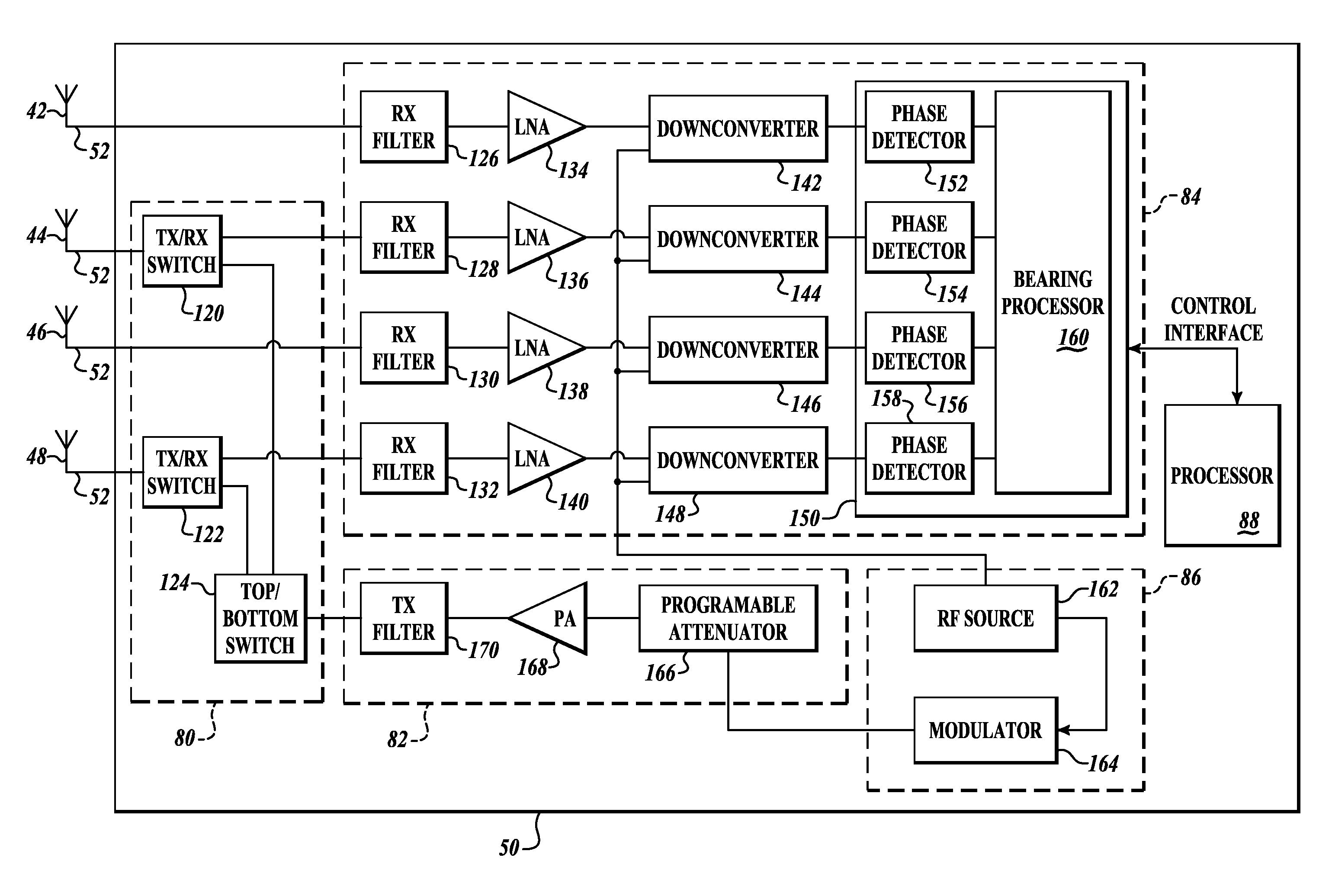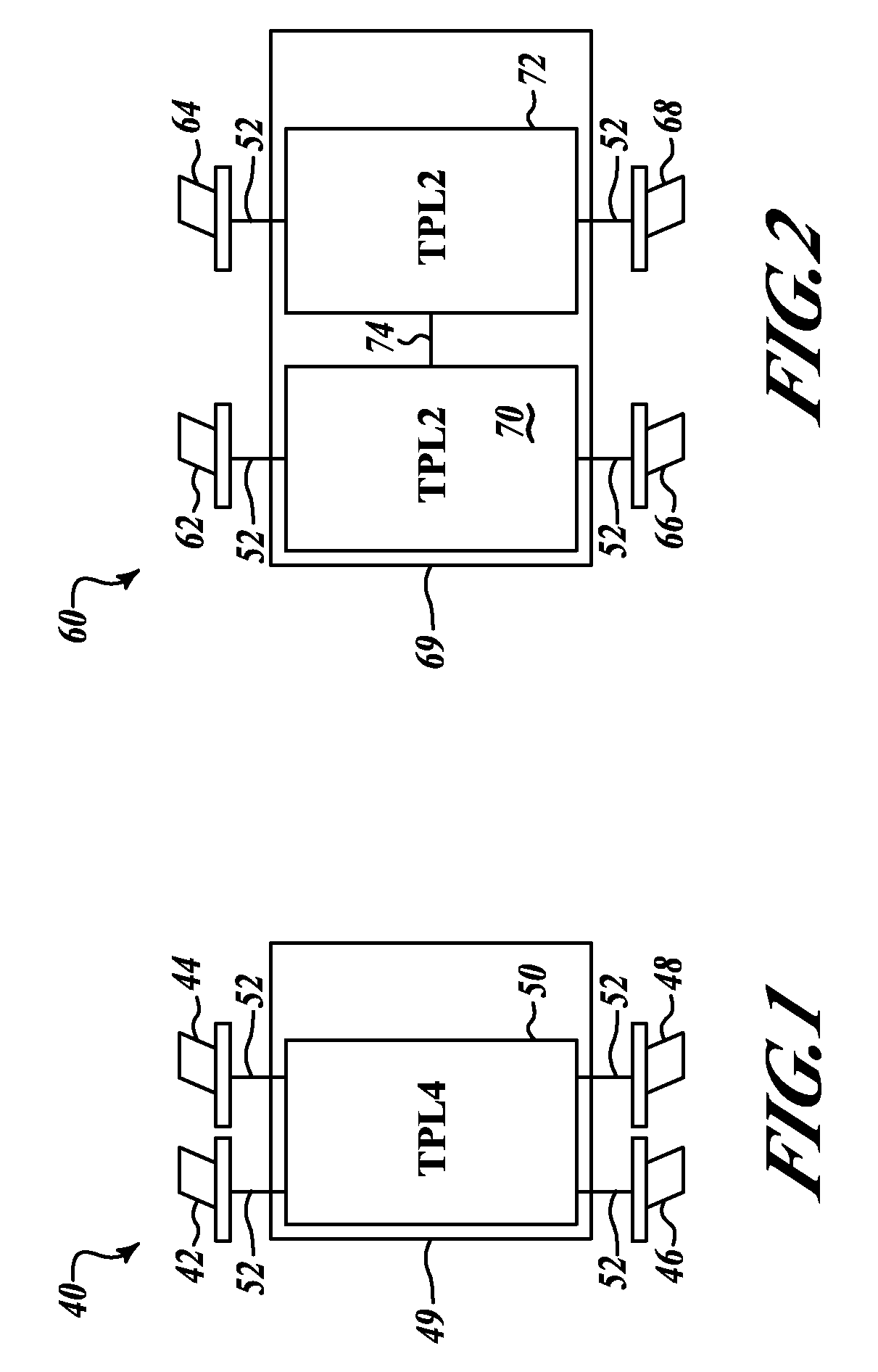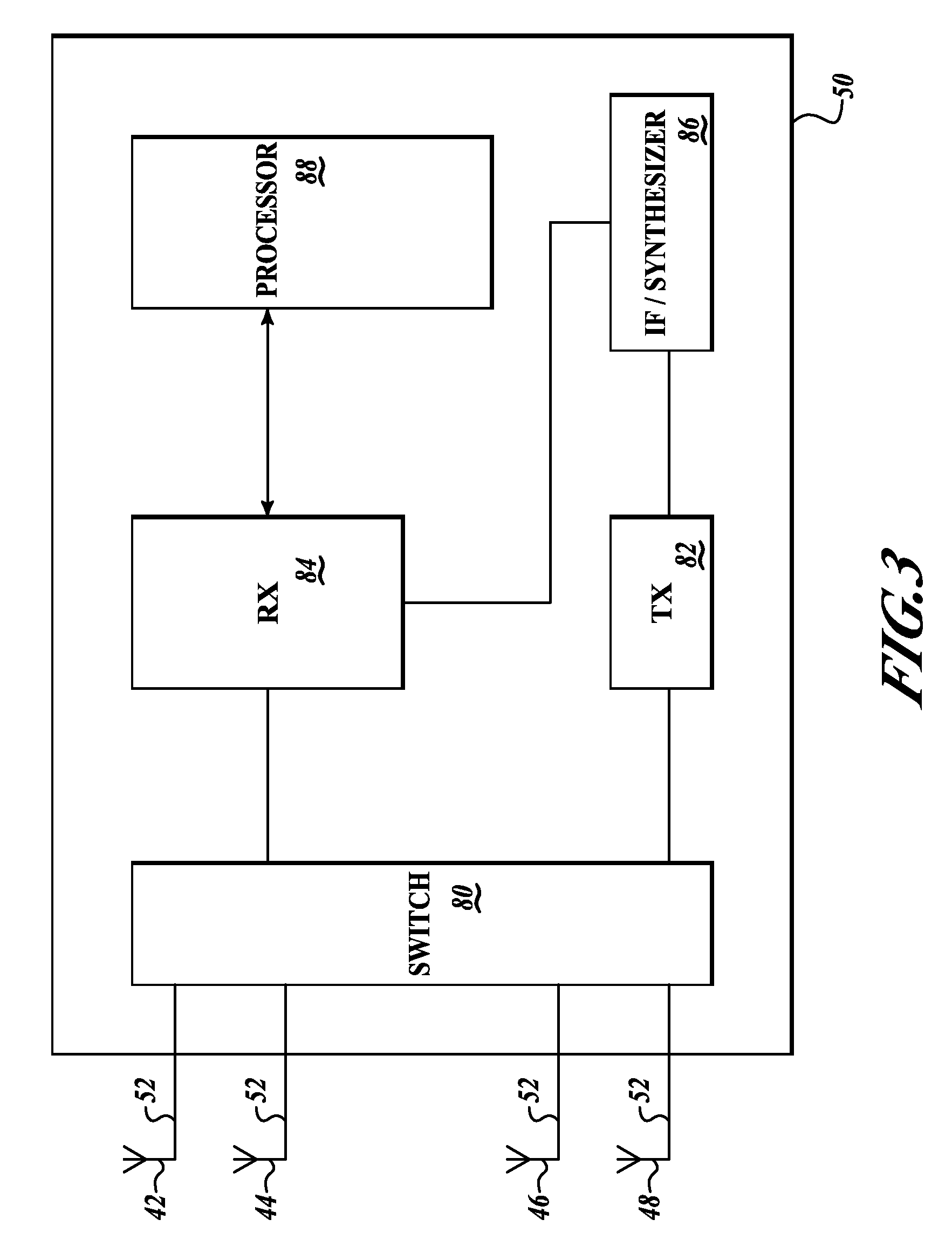Distributed and cable reduced tcas
a technology of distribution and cable, applied in direction finders, aircraft traffic control, instruments, etc., can solve the problems of high cost of current traffic alert collision avoidance (tcas) installation, insufficient bandwidth of standard tcas antenna, and considerable complexity and expense, so as to achieve less cabling, less cabling, and less cabling
- Summary
- Abstract
- Description
- Claims
- Application Information
AI Technical Summary
Benefits of technology
Problems solved by technology
Method used
Image
Examples
Embodiment Construction
[0016]In an embodiment, the invention uses 4 cables to implement a Traffic Alert Collision Avoidance System (TCAS) and uses standard L-band blade antennas. This simplifies L-band integration because the standard L-band blade handles TCAS, transponder (XPDR), and Distance Measuring Equipment (DME) frequencies. In an alternative embodiment, the TCAS receive function is distributed between two units that each have one receiver switched between two antenna ports. This further reduces the cost of the TCAS receive function. Although each unit is stated to include one receiver, it should be understood that each receiver includes a plurality of receiving components in some embodiments, with each component including a reception channel that is referred to as a receiver in some embodiments.
[0017]In an embodiment, TCAS surveillance is performed using an omnidirectional transmit pattern, thereby allowing the use of a standard L-Band transponder and / or DME antenna. TCAS bearing measurements are ...
PUM
 Login to View More
Login to View More Abstract
Description
Claims
Application Information
 Login to View More
Login to View More - R&D
- Intellectual Property
- Life Sciences
- Materials
- Tech Scout
- Unparalleled Data Quality
- Higher Quality Content
- 60% Fewer Hallucinations
Browse by: Latest US Patents, China's latest patents, Technical Efficacy Thesaurus, Application Domain, Technology Topic, Popular Technical Reports.
© 2025 PatSnap. All rights reserved.Legal|Privacy policy|Modern Slavery Act Transparency Statement|Sitemap|About US| Contact US: help@patsnap.com



